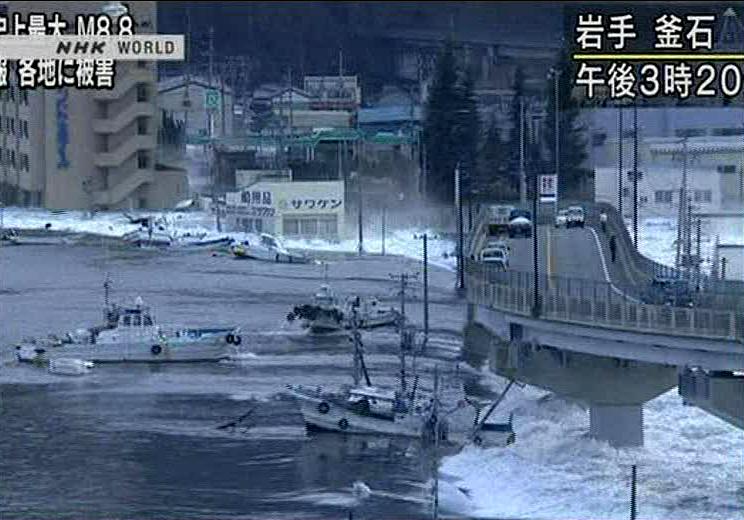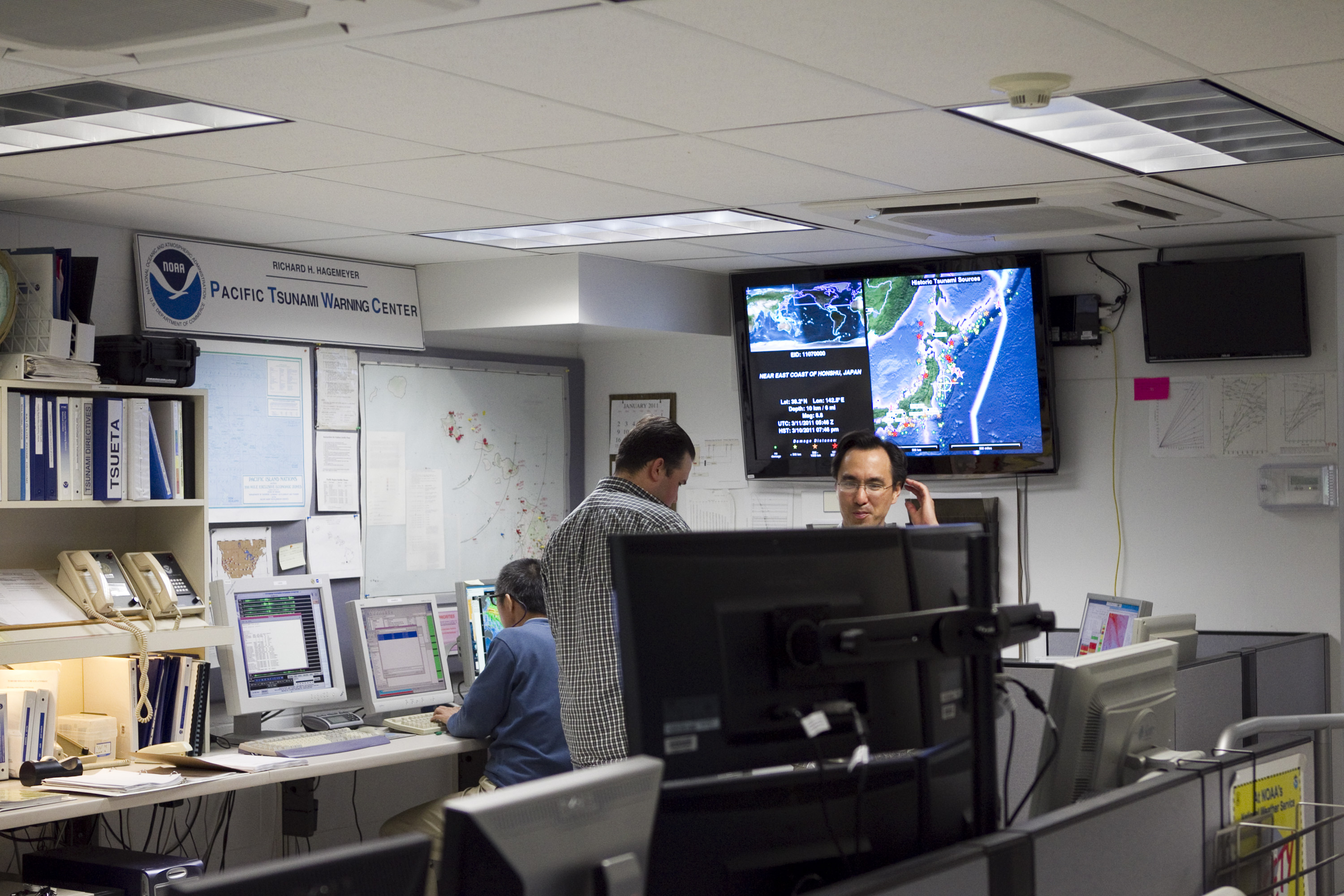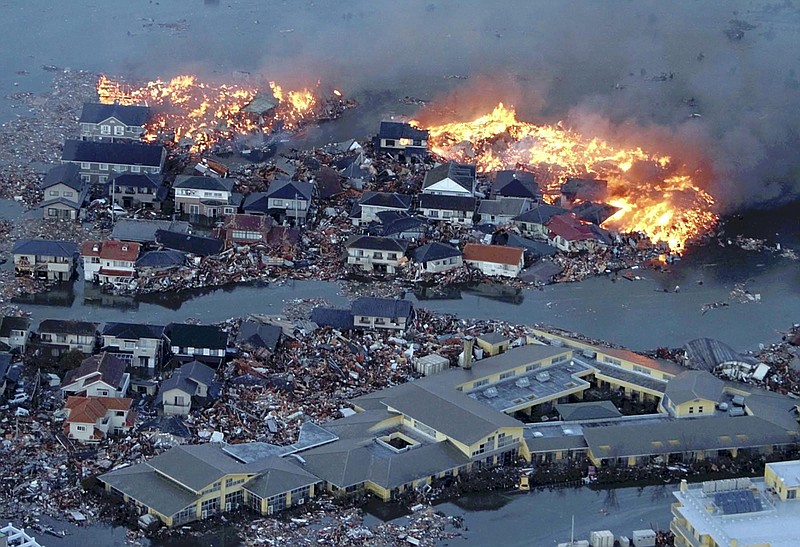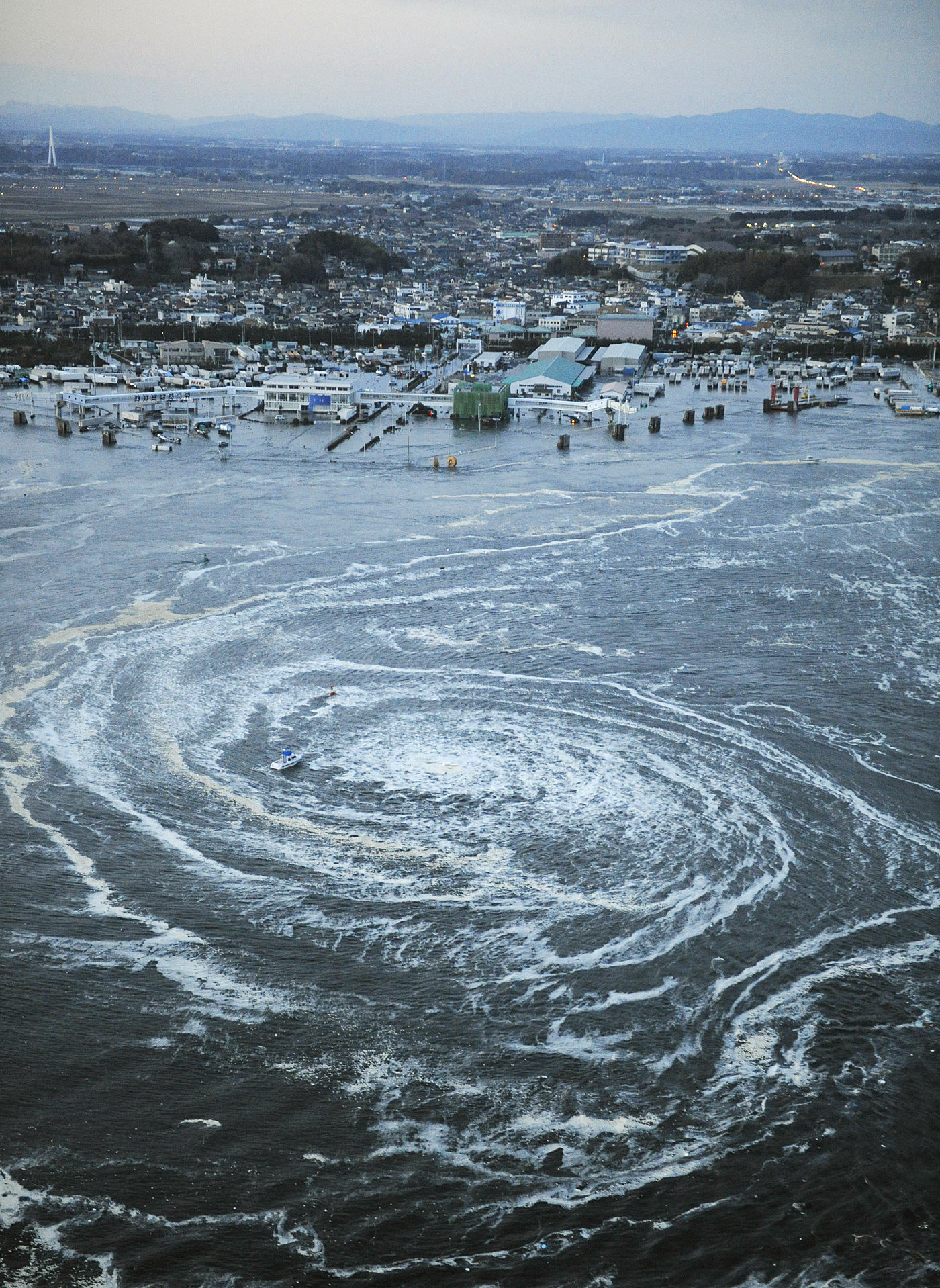UPDATE: TOKYO (AP) - Police raise death toll from Japan earthquake to 60, with 56 missing.
JAYMES SONG, Associated Press
HONOLULU - Hawaii and other parts of the Pacific including the U.S. western coast braced for a destructive tsunami early Friday after a massive earthquake struck in Japan.
Tsunami sirens were sounded and coastal areas were being evacuated in Hawaii, where the first waves were expected to hit about 6 a.m. PST Friday.
Waves about a foot and a half high hit Wake Island in the Northern Pacific, meaning the biggest waves to hit Hawaii could reach more than 6 feet, said Gerard Fryer, a geophysicist for the Pacific Tsunami Warning Center.
Residents in coastal areas across the Pacific from Hawaii to Guam were ordered to evacuate to shelters and higher ground. In Hawaii's tourist district of Waikiki, visitors were being moved to higher floors of their hotels. Residents waited in long lines stocking up on gas, bottled water, canned food and generators.
"We're preparing for the worst and we're praying for the best," said John Cummings III, spokesman for the Honolulu Department of Emergency Management.
Tsunamis can travel at speeds of 500 mph, as fast as a jetliner. Tsunami warnings are issued due to the imminent threat of a tsunami. Waves could hit the western coast of the United States between 7 a.m. and 7:30 a.m. PST Friday.
The warnings issued by the Hawaii-based Pacific Tsunami Warning Center cover an area stretching the entire western coast of the United States and Canada from the Mexican border to Chignik Bay in Alaska.
In Alaska, a dozen small communities along the Aleutian Island chain were on alert.
"Everyone in that area knows, when you feel it, move - don't wait for a siren," said John Madden, director of the Alaska Division of Homeland Security and Emergency Management. The largest affected town is Unalaska, population about 4,000.
 In this video image taken from Japan's NHK TV, a wave from the tsunami sweeps boats inland in Kamaishi, Iwate Prefecture, Japan Friday March 11, 2011 following a massive earth quake. A magnitude 8.9 earthquake slammed Japan's northeastern coast Friday, unleashing a 13-foot (4-meter) tsunami that swept boats, cars, buildings and tons of debris miles inland. Fires triggered by the quake burned out of control up and down the coast. (AP PHOTO/NHK TV)
In this video image taken from Japan's NHK TV, a wave from the tsunami sweeps boats inland in Kamaishi, Iwate Prefecture, Japan Friday March 11, 2011 following a massive earth quake. A magnitude 8.9 earthquake slammed Japan's northeastern coast Friday, unleashing a 13-foot (4-meter) tsunami that swept boats, cars, buildings and tons of debris miles inland. Fires triggered by the quake burned out of control up and down the coast. (AP PHOTO/NHK TV)The tsunami was expected to hit the Northern Mariana Islands, a U.S. territory at 1 a.m. PST, but no big waves came. Waves about 2.6 feet high hit the beach in Saipan, and sirens still sounded in the empty streets.
Maria Mettao, who works at the front desk of the Hyatt Regency Saipan in the Northern Marianas, said hotel staff has been given the all-clear. Mettao said the hotel has allowed guests to leave from the higher floors where they had been evacuated.
In the Philippines, officials ordered an evacuation of coastal communities along the country's eastern seaboard in expectation of a tsunami following the 8.9-magnitude earthquake in Japan.
Disaster management officials in Albay province southeast of Manila say they ordered residents to move to designated evacuation sites that are at least 15 feet (5 meters) above sea level.
In Guam, authorities advised people to evacuate low areas of the U.S. territory and seek ground higher than 50 feet above sea level and 100 feet inland.
Australia was not in danger because it was protected by island nations to the north, including Papua New Guinea and the Solomon Islands, that would largely absorb any wave activity, said Chris Ryan, a forecaster at the National Meteorological and Oceanographic Centre, the Australian government agency that monitors the threat.
The warning was issued Thursday at 9:31 HST p.m. Sirens were sounded about 30 minutes later in Honolulu alerting people in coastal areas to evacuate. About 70 percent of Hawaii's 1.4 million population resides in Honolulu, and as many as 100,000 tourists are in the city on any given day.
Honolulu's Department of Emergency Management has created refuge areas at community centers and schools, and authorities on Kauai island have opened 11 schools to serve as shelters for those who have left tsunami inundation zones.
 Workers are seen inside the Pacific Tsunami Warning Center, Thursday, March 10, 2011 in Honolulu. The Pacific Tsunami Warning Center in Hawaii has widened its tsunami warning to include Hawaii and the rest of the Pacific Ocean. The warning was issued Thursday at 9:31 HST p.m. Sirens were sounded shortly afterward in Honolulu alerting people in coastal areas to evacuate. The warning follows a massive earthquake that has struck off the northeastern coast of Japan. The first waves were expected to arrive at 2:55 a.m. HST Friday. (AP Photo/ Marco Garcia)
Workers are seen inside the Pacific Tsunami Warning Center, Thursday, March 10, 2011 in Honolulu. The Pacific Tsunami Warning Center in Hawaii has widened its tsunami warning to include Hawaii and the rest of the Pacific Ocean. The warning was issued Thursday at 9:31 HST p.m. Sirens were sounded shortly afterward in Honolulu alerting people in coastal areas to evacuate. The warning follows a massive earthquake that has struck off the northeastern coast of Japan. The first waves were expected to arrive at 2:55 a.m. HST Friday. (AP Photo/ Marco Garcia)Gov. Neil Abercrombie told residents to take the warning seriously and head for higher ground. A small 4.5-magnitude earthquake struck the Big Island just before 2 a.m., but there were no reports of damages and the quakes weren't likely related, a geophysicist with the United States Geological Survey said.
U.S. Coast Guard rescue crews were making preparations throughout the Hawaiian Islands to provide post-tsunami support, with cutter and aircraft crews positioning themselves to conduct response and survey missions.
Dennis Fujimoto said the mood is calm but concerned on the island of Kauai while people readying for the tsunami.
There's long lines at gas stations, and at the Wal-Mart, one of the few places that was open to midnight, people were stocking up on supplies.
"You got people walking out of there with wagonloads of water," he said.
Chip McCreary, the center's director, said tsunami waves have the potential to swamp coastal areas of all Hawaii's islands.
"What these waves look like is an elevation of sea level, where the sea level will rise above its normal level and stay high for 10 or 15 minutes before it starts to recede," he said. "As a result of this, in a tsunami wave, that water can flood the coast line and be a hazard to people and buildings on the coast."
McCreary said the threat will become clearer when the waves hit Wake Island and Midway.
"Tsunami waves, because of their long length, they wrap around our islands very efficiently," he said.
Readings have come in from deep ocean gages deployed since the 2004 tsunami in Banda Acha in Japan and around Wake Island.

